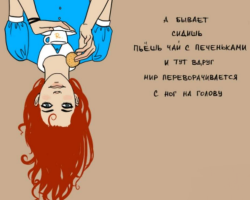Chameleon drawing for beginners
Content
- How to draw a chameleon with a pencil: for beginners
- How to draw a chameleon with a crest: a pencil drawing
- Video: How to draw a chameleon?
- How to draw a cartoon chameleon: for beginners and children
- Video: drawing lessons. How to draw a chameleon?
- Chameleon: drawings for sketching
- Video: How to draw a chameleon (for children)?
“Creativity” of nature is able not only to surprise, but also to amaze with unique and perfect forms. One of the quirks of nature is a chameleon that changes the color of the skin under the color of the surrounding space. Similar "works" of nature are in abundance on the planet.
How to draw a chameleon with a pencil: for beginners
Not all of us are capable of creating something perfect, not able to repeat even a small part of what nature does. But we suggest you try to convey her efforts through the methods available to us. For example, drawing. A regular drawing is an opportunity to fully realize the whole inner world and make sure that we are also able to create!
We draw a chameleon, putting a grain of his soul into him. If you exactly follow our step -by -step descriptions, trusting your creative fire, then be sure to cope.

- To begin with, let's try to find out what gives this lizard such an unusual look. Chameleons are beautiful hunters. And all because they are excellently disguised from prey. The same method is used by them to mask from predators.
- Chameleons have long tongues. They are sticky, capable of holding their prey tightly.
So, proceed to creative classes. The first drawing will be performed in the style of "still life".
So that in the process the drawing does not “leave” beyond the boundaries of the sheet, we will retreat a little and draw the lines along the edges. Experienced artists conduct such boundaries mentally, but we are only learning. Therefore, we do not ignore this step, otherwise only the head or half of the body of the reptile can fit on the sheet, and the rest will turn out to be somewhere outside the paper sheet and we will only have to think out what kind of lap-paws are there and how long the tail is the tail .
- After drawing the borders, with light lines we outline the location on the sheet of the reptile itself.
Now you can proceed to more accurate contours. - To correctly enter the reptile on a sheet of paper, we will make preliminary marking. We divide the sheet by 2 horizontally, then - vertically. We got four rectangles. With each rectangle we make the same actions so that in the end we get 16 rectangles. You can skip this step and start immediately from the picture if you print the finished base net.

- We outline the boundaries of the figure in height and width with light lines. Now let's draw two ovals, one of them is small. It will be the head of the reptile. The second is large. This is the body of the chameleon. At this stage, you can also draw two lines, indicating the branch on which the reptile sits.

- On top of the drawn ovals we draw a smooth line, connecting the head to the body. From below we will continue the contour of the body and draw a kind of curl. It will be the tail of the reptile.
- Now you need to indicate the upper line of the head, depict the paws with curved lines and draw a short straight line at the location of the chameleon's mouth.


- We clarify the shape of the paws of the reptile, we lead the contour of the muzzle, slightly stretching in the front of the drawn oval.
- We move on to the most interesting stage in the work: detailing of the drawing and final design.
We draw the paws of the chameleon, a large eye and outline a crest that is lowered and adjacent to the head. - We outline the head of the reptile: we work out in more detail, giving it characteristic bends. We draw eyelids, nostrils, finish the twisted tip of the tail.



- We work out the wavy part of the head of the chameleon. We finish the pupil.
- Detail the picture: we give a more realistic type of reptile. Show with light strokes the wrinkled skin of the chameleon and draw folds. We finalize the details, focusing on the original. We pay attention to the branch. We delete auxiliary lines.



INTERESTING: Chameleon, sitting on a branch, changes color, merging with a branch. When the reptile sits on the stone, its skin repeats the color and pattern of the stone. Changing the color of the skin occurs within 20 seconds. You can meet this reptile in the living nature of Africa, Asia, Madagascar. In the United States, these reptiles were imported and successfully spread throughout the territory.


How to draw a chameleon with a crest: a pencil drawing
We draw a chameleon with a high crest raised. After all, this is his main decoration!
Let's start drawing a reptile from the image of three circles located at a certain distance from each other.


- Combine the circles curved lines. The initial contours are very simple, isn't it? A few more minutes, and we can see the outlines of the reptile in drawn circles and dashes.

- We draw a chameleon crest in the form of a cone on an extreme circle (average in size).
- We continue the curved line from the extreme small circle down, depicting a small curl. It will be the tail of the reptile. On the sides of a large circle we draw two circles, which will then turn into the limbs of reptiles.

- We draw the back of the chameleon, and also draw a neckline on the head of the head.

- We draw the paws of the chameleon, focusing on small circles. The paws should be located in proportion to the body. Keep in mind that the front paws of the chameleon and the rear are formed in different ways. Therefore, we carefully look at the original drawing and transfer all the missing lines.
- The chameleon we are drawing, the tongue is hidden. But if you decide to depict a reptile grabbing your prey, then draw a tongue in the form of a lasso insect or other small animal, thrown around and twisted around.

- We finish the reptile, indicating the mouth, paws (pay attention to how the fingers are drawn), we also finish the tail and the branch on which our reptile is located.
- There are several details left: the drawing of claws, eyes, clarification of the contour of the body of the reptile. After the main sketch is completed, you need to work on small details, show the folds on the skin of the chameleon using short stroke lines, and remove additional lines. The finished drawing can be decorated. In the usual state (not in aggressive), green chameleon.

Video: How to draw a chameleon?
How to draw a cartoon chameleon: for beginners and children
To draw a cartoon chameleon, you need to draw limiting lines. So it will be easier to “enter” the drawing on a sheet of paper.

First option
We draw the initial contours of the body of the reptile: the head, back, twisted tail and show with curved paw lines.


Now we begin to draw the lower part of the body of the reptile: we carry out the contour of the jaw, add outstretched fingers on the paws.

We draw a large eye and contour of the second paw. Add the missing details, focusing on the photo.


The second option
- We draw two circles. If a large circle is usually drawn for the body, then it will be the opposite here. Since we draw a chameleon cub, his body will be small and his head will be large.

- We proceed immediately to the drawing of the chameleon head: we draw a large circle and make small ledges: in the face of the muzzle and where the crest will be located.

- We go to the lower front limbs.

- We draw the back, and continue the line, wrapping it with a “bagel”. It will be a hameleon tail. We draw the back paw of reptiles.


- It remains for us to draw a muzzle of our cartoon chameleon: draw our eyes, we denote a nostril with one short stroke and draw a line of mouth.


Video: drawing lessons. How to draw a chameleon?
Chameleon: drawings for sketching










